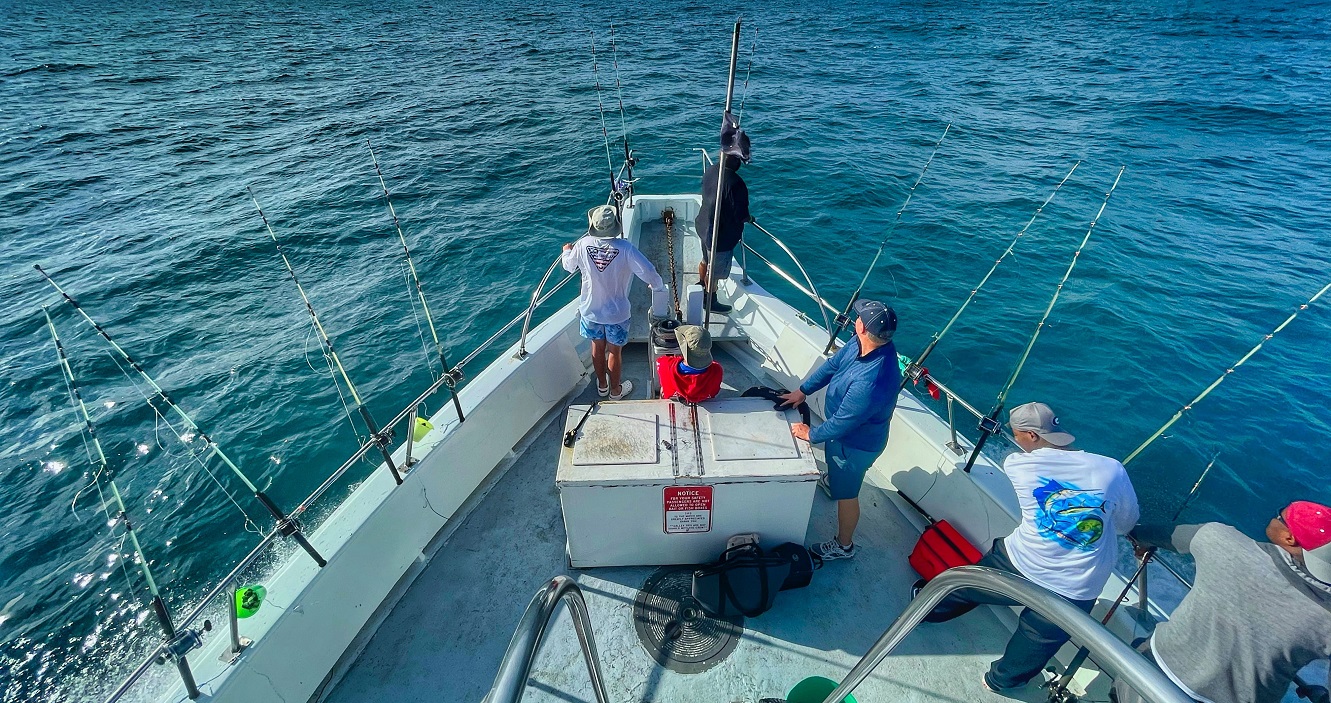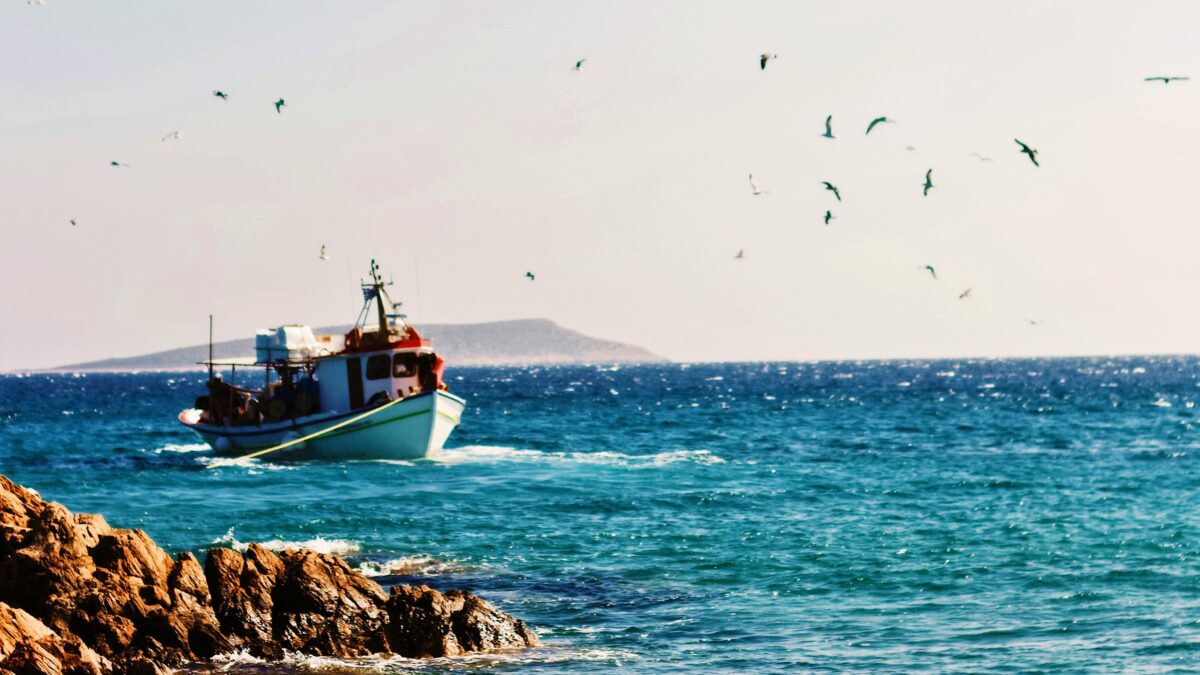Inshore vs. Offshore Fishing: Exploring the Depths of Anglers’ Paradise
Are you ready to embark on an adventure and explore the depths of anglers’ paradise? In the world of fishing, two popular methods reign supreme: inshore and offshore fishing. While they both offer the thrill of reeling in a catch, they differ in terms of location, types of fish, and techniques used.
Inshore fishing takes place closer to the shoreline, typically in calm waters such as bays, estuaries, and lagoons. This method is perfect for those who prefer a more relaxed and accessible fishing experience. Expect to target species like redfish, snook, and trout, as well as enjoying picturesque coastal views. On the other hand, offshore fishing requires venturing further out into the open ocean in pursuit of larger game fish like marlin, tuna, and sailfish. It offers a more challenging and adrenaline-pumping experience, perfect for those seeking a true angling adventure.
Whether you prefer the tranquility of inshore fishing or the excitement of offshore fishing, each method has its own unique appeal. Join us as we dive deep into the world of inshore and offshore fishing, uncovering the differences, techniques, and remarkable experiences awaiting eager anglers. Let’s cast our lines and discover which fishing style suits you best!
Key Differences Between Inshore and Offshore Fishing
Inshore fishing takes place closer to the shoreline, typically in calm waters such as bays, estuaries, and lagoons. This method is perfect for those who prefer a more relaxed and accessible fishing experience. Inshore fishing provides anglers with the opportunity to enjoy picturesque coastal views while targeting a variety of game fish. Species like redfish, snook, and trout are commonly found in these shallow waters.
Offshore fishing, on the other hand, requires venturing further out into the open ocean in pursuit of larger game fish like marlin, tuna, and sailfish. It offers a more challenging and adrenaline-pumping experience, perfect for those seeking a true angling adventure. Offshore fishing is characterized by deep-sea fishing techniques, where anglers often encounter stronger currents, rougher waters, and a wider range of species.
Pros and Cons of Inshore Fishing
Inshore fishing has numerous advantages that make it appealing to both novice and experienced anglers. One of the key benefits is its accessibility. Since inshore fishing takes place closer to the shore, anglers can easily reach the fishing spots without the need for long boat rides or specialized equipment. This accessibility makes inshore fishing an ideal choice for families or those who prefer shorter fishing trips.
Another advantage of inshore fishing is the abundance of fish species that can be targeted. Inshore waters are home to a wide variety of game fish, including redfish, snook, trout, flounder, and tarpon. This diversity provides anglers with ample opportunities to test their skills and reel in a prized catch. Additionally, inshore fishing often allows for catch-and-release practices, promoting the conservation of fish populations.
However, inshore fishing does have its limitations. Since it takes place in shallow waters, anglers are restricted to targeting species that inhabit these areas. The size of the fish caught inshore is generally smaller compared to offshore fishing. Furthermore, weather conditions and tidal movements can greatly impact the success of an inshore fishing trip. Anglers must be mindful of changing environmental factors to maximize their chances of a successful outing.

Pros and Cons of Offshore Fishing
Offshore fishing offers a whole different level of excitement and challenge. One of the main advantages of offshore fishing is the opportunity to target larger and more prestigious game fish. Species like marlin, tuna, sailfish, and mahi-mahi are synonymous with offshore fishing. Anglers who venture into the open ocean have a chance to battle these powerful creatures, testing their skills, strength, and determination.
Moreover, offshore fishing provides a sense of adventure and exploration. The open ocean offers vast stretches of water and the opportunity to discover new fishing grounds. Anglers can experience the thrill of traveling miles offshore, guided by the hope of encountering a trophy-sized fish. The adrenaline rush that comes with offshore fishing is unrivaled, making it a favorite among seasoned anglers.
However, offshore fishing also comes with its own set of challenges. The cost associated with offshore fishing can be significantly higher than inshore fishing. The need for specialized boats, advanced fishing gear, and longer trips can increase the overall expenses. Additionally, offshore fishing requires a certain level of experience and knowledge to navigate the open waters safely. Anglers must be well-prepared and aware of the potential risks involved in deep-sea fishing.
Popular Inshore Fishing Techniques and Gear
Inshore fishing techniques vary depending on the target species and the angler’s preference. Some popular techniques include:
1. Baitcasting: This technique involves using a baitcasting reel to cast artificial lures or live bait towards targeted areas. It requires skill and practice to master the art of casting accurately and effectively.
2. Fly fishing: Fly fishing inshore is a popular technique for targeting species like redfish and trout. Anglers use lightweight rods, specialized flies, and precise casting techniques to entice the fish to bite.
3. Bottom fishing: Bottom fishing involves dropping baited hooks or lures to the ocean floor, targeting species that dwell near structures like reefs, jetties, or bridges. This technique is effective for catching species like snapper, grouper, and flounder.
In terms of gear, anglers typically use lightweight spinning or baitcasting rods and reels, capable of handling the size and weight of the targeted species. Fishing lines with appropriate pound test ratings, a variety of artificial lures, live bait, and a selection of hooks are essential for a successful inshore fishing trip.
Popular Offshore Fishing Techniques and Gear
Offshore fishing techniques are often more specialized and require heavier-duty equipment. Some popular techniques include:
1. Trolling: Trolling involves dragging lures or baited lines behind a moving boat. This technique is effective for covering large areas of water and enticing fast-moving pelagic species like marlin, tuna, and wahoo.
2. Deep-sea fishing: Deep-sea fishing involves dropping lines with heavy sinkers or weights to depths where target species reside. This technique is commonly used to catch bottom-dwelling fish like grouper, snapper, and amberjack.
3. Kite fishing: Kite fishing is a unique technique that utilizes kites to suspend baits above the water’s surface. This technique allows anglers to present baits in a natural and enticing manner, often attracting species like sailfish and kingfish.
Offshore fishing requires heavy-duty rods and reels capable of handling larger fish and withstand the harsh conditions of the open ocean. Lines with higher pound test ratings, leaders, swivels, and a variety of lures and baits are essential for offshore fishing success.
Best Locations for Inshore Fishing
Inshore fishing can be enjoyed in various locations around the world. Here are some popular destinations for inshore fishing:
1. Florida Keys: Known for its diverse inshore fishing opportunities, the Florida Keys offer anglers the chance to target species like tarpon, bonefish, and permit in the crystal-clear flats.
2. Belize: With its extensive network of mangroves, lagoons, and barrier reefs, Belize is a haven for inshore fishing enthusiasts. Species like snook, tarpon, and permit can be found in these pristine waters.
3. The Seychelles: This remote archipelago in the Indian Ocean is famous for its world-class fishing. Inshore enthusiasts can target species like giant trevally, bonefish, and milkfish while enjoying the breathtaking scenery.
Best Locations for Offshore Fishing
For those seeking the thrill of offshore fishing, here are some of the best destinations to explore:
1. Cabo San Lucas, Mexico: This renowned fishing destination offers offshore anglers the opportunity to target marlin, tuna, dorado, and more. The waters surrounding Cabo San Lucas are teeming with game fish.
2. Great Barrier Reef, Australia: The Great Barrier Reef is not only a natural wonder but also a paradise for offshore anglers. This UNESCO World Heritage Site offers excellent opportunities to catch species like black marlin, sailfish, and giant trevally.
3. Costa Rica: With its Pacific and Caribbean coastlines, Costa Rica is a prime location for offshore fishing. Anglers can target a wide range of species including marlin, sailfish, roosterfish, and yellowfin tuna.
Safety Considerations for Inshore and Offshore Fishing
Regardless of whether you choose inshore or offshore fishing, safety should always be a top priority. Here are some essential safety considerations:
1. Weather conditions: Stay updated on weather forecasts and be aware of any potential storms or rough conditions. It’s essential to have a plan in place in case of unexpected weather changes.
2. Safety equipment: Ensure that you have all the necessary safety equipment onboard, including life jackets, flares, a first aid kit, and a working communication device.
3. Knowledge and experience: If you’re new to fishing or unfamiliar with the area, consider hiring a guide or joining a charter. Their expertise and local knowledge can help ensure a safe and successful fishing trip.
Conclusion: Choosing the right fishing experience for you
Inshore and offshore fishing offer unique experiences for anglers of all levels. Inshore fishing provides a tranquil and accessible option, allowing anglers to target a variety of species in calm waters. Offshore fishing, on the other hand, offers adventure, excitement, and the opportunity to battle larger game fish in the open ocean.
When choosing between inshore and offshore fishing, consider your preferences, budget, and level of experience. Both methods have their own pros and cons, so it’s essential to weigh them against your personal fishing goals. Whether you prefer the tranquility of inshore fishing or the exhilaration of offshore expeditions, there’s no shortage of angling opportunities waiting to be explored. So, grab your fishing gear, cast your lines, and embark on your next fishing adventure!
Thanks For Reading the best men’s lifestyle blog!








